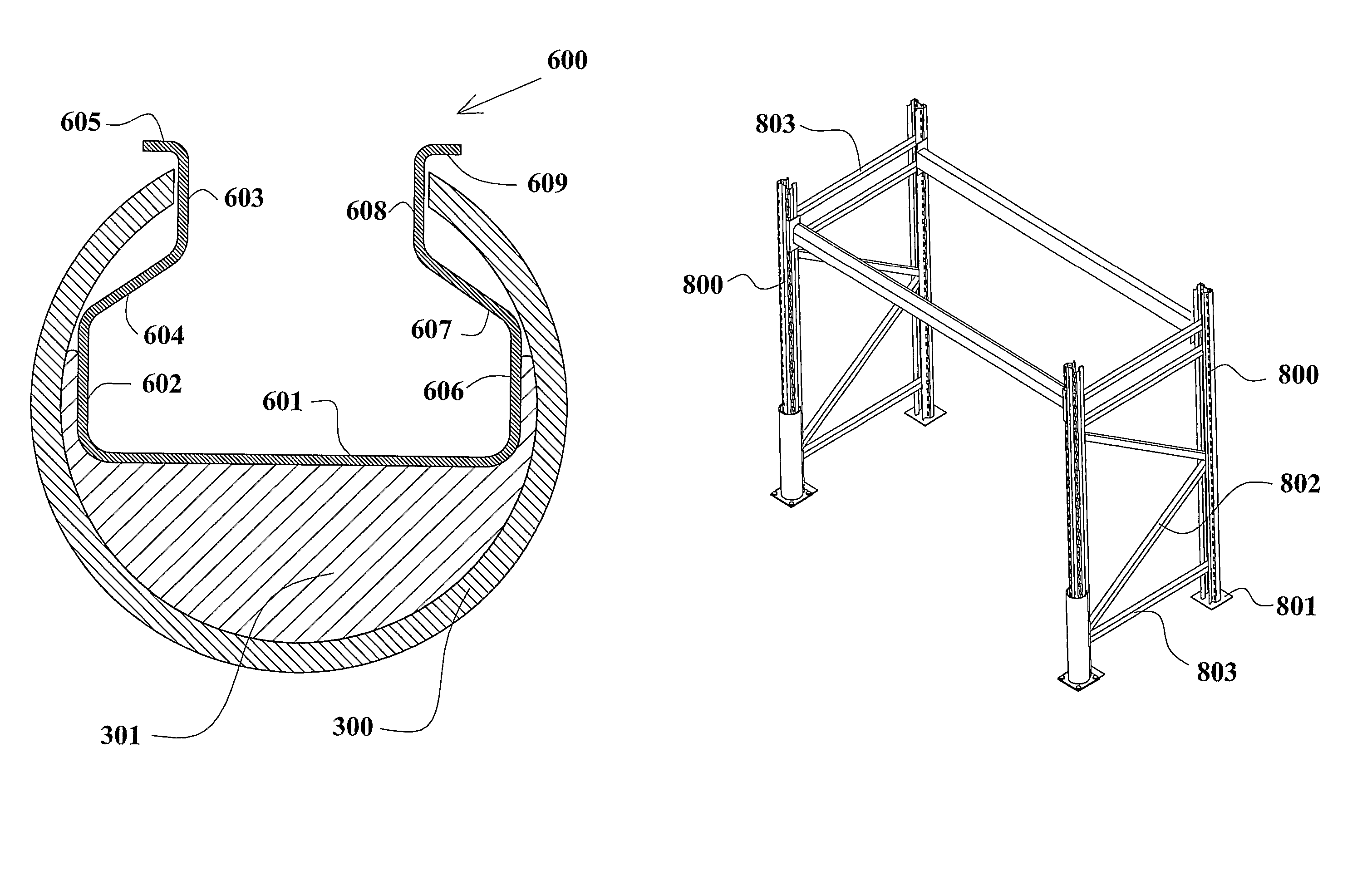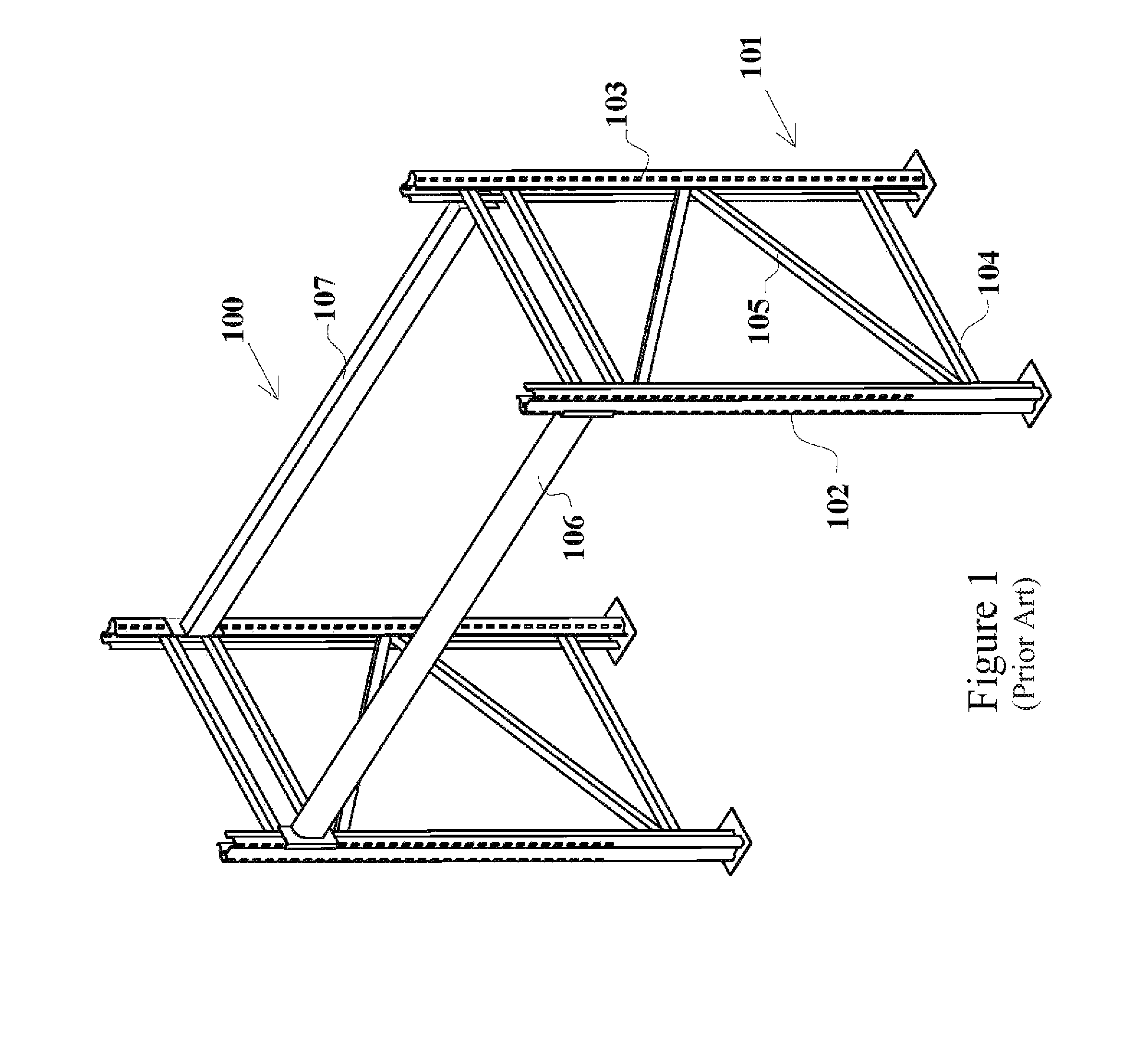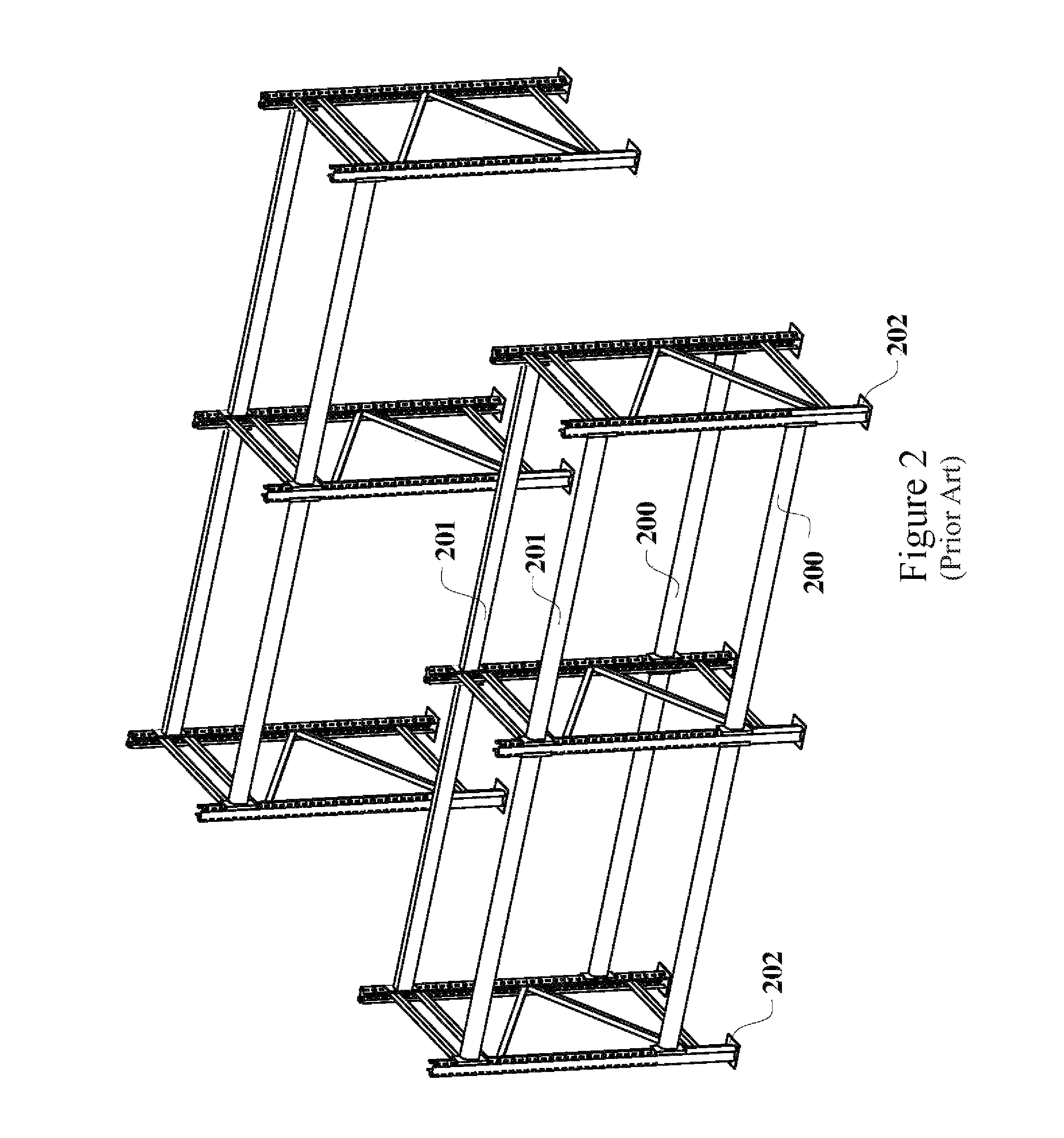Pallet rack impact protector
a protection device and pallet rack technology, applied in the direction of building components, structural elements, domestic objects, etc., can solve the problems of severe safety and financial loss potential, destructive dynamic impact force between the moving mhe and the pallet rack, and the need for simultaneous use of central and peripheral vision, so as to prevent or reduce the likelihood of damage to the racking uprigh
- Summary
- Abstract
- Description
- Claims
- Application Information
AI Technical Summary
Benefits of technology
Problems solved by technology
Method used
Image
Examples
first embodiment
[0097]
Outer shell:Height:59 cm ±5 mm.Diameter:10.7 cm ±2 mmWall thickness:7 mm ±1.5 mmCut away angle:85°±5°Circumference around 27.3 cm ±5 mmouter shell between longitudinal edges:Inner liner:Height:59 cm ±5 mm.Diameter:9 cm ±1 mm“U” channel width:7.8 cm ±2 mm“U” channel depth:2.6 cm ±2 mmMax. distance “U” channel 3.6 cm ±2 mmsurface to outer surface:
second embodiment
[0098]
Outer shell:Height:60 cm ±5 mm.Diameter:12.5 cm ±2 mmWall thickness:8 mm ±0.5 mmCut away angle:90°±5°Circumference around outer shell28.8 cm ±5 mmbetween longitudinal edges:Inner liner:Height:59 cm ±5 mm.Diameter:10.6 cm ±1 mm“U” channel width:9.0 cm ±5 mm“U” channel depth:1.4 cm ±7 mmMax. distance “U” channel 3.0 cm ±4 mmsurface to outer surface:
[0099]Referring to FIG. 6 herein, there is illustrated schematically in cut away cross section from above, a column post 600 of a racking system, having the column protector device installed. The known post comprises an elongate metal member 600 which is channel shaped in cross section, and presenting a substantially rectangular front aspect, the member comprising a front member 601; a first outer side member 602 connected to the front member 601 at one edge thereof and extending laterally from the front member; a first inner side member 603 disposed inwardly of the first outer side member 602, and extending approximately parallel the...
PUM
 Login to View More
Login to View More Abstract
Description
Claims
Application Information
 Login to View More
Login to View More - R&D
- Intellectual Property
- Life Sciences
- Materials
- Tech Scout
- Unparalleled Data Quality
- Higher Quality Content
- 60% Fewer Hallucinations
Browse by: Latest US Patents, China's latest patents, Technical Efficacy Thesaurus, Application Domain, Technology Topic, Popular Technical Reports.
© 2025 PatSnap. All rights reserved.Legal|Privacy policy|Modern Slavery Act Transparency Statement|Sitemap|About US| Contact US: help@patsnap.com



